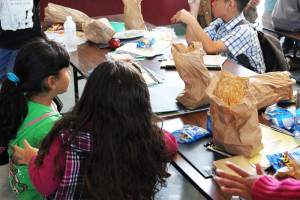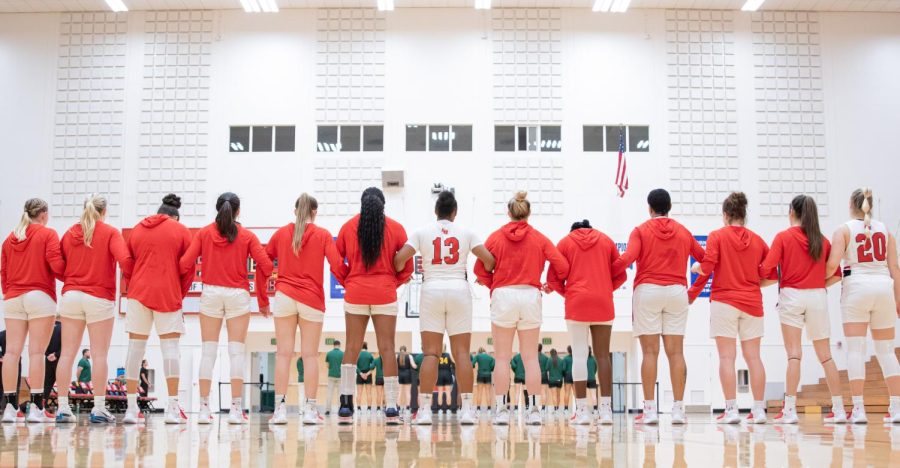
lunches during the school year, and the “Let’s Do Lunch
Hayward...and Breakfast too” program has augmented
those services in the summer.
With nearly six million Californians impoverished, roughly a third of them are children, according to the U.S. Census Bureau.
A new study published by The United Nations Children’s Fund (UNICEF) this May reports that the United States is second only to Latvia for countries with high child poverty rates. Over 30 percent of children in the United States live in households that are below the poverty level, defined by the federal government as an income of $22,113 for a family of four.
In the city of Hayward, child poverty has been an increasing struggle, one that multiplied since the 2007 recession.
According to Hayward councilman Mark Salinas, over 60 percent of children enrolled in the Hayward Unified School District (HUSD) qualify for free or reduced lunches, receiving two of their three meals a day from school, exemplifying the state of poverty in California and nationwide.
“Let’s Do Lunch Hayward…and Breakfast too” is a community-based program that aims to combat child poverty, by providing children with breakfast and lunch during the summer, currently in the middle of its second year.
Children qualify for this program if they come from households with below poverty level income, as Salina says this exemplifies what a significant and staggering problem poverty and hunger issues have become in the city of Hayward.
The program allows children 18 years of age and younger to simply show up at one of roughly 30 sites run by district employees and volunteers in the Hayward area, grab a meal, and take off. There are no identification checks or paperwork involved.

in the program.
“That was a big issue,” Salinas said. “Once you introduce paperwork into the process, that discourages a lot of people.”
Many parents have expressed gratitude and appreciation for the program as it aids them to keep their children fed throughout the year.
“Right now I’m not working so it makes a big difference,” said Valerie Kysella, of Castro Valley, whose son attends summer school at Hayward High.
“It’s satisfying to know all your hard work goes to something good,” said Clifford Tom, one of the district’s employees, who aides in the packing and preparation of food for many of the distribution sites.
Salinas worked with the HUSD food services and many organizations in the community to jumpstart this program last year.
Salinas said because the school district itself didn’t have the resources to pull an entire city together, that’s where he was able to help, explaining that everyone from the parks district to non-profits and faith-based organizations got involved in the project to help open more sites to serve kids meals.
“We really built a community wide coalition,” said Salinas.
Kysella says the help is “huge.”
“Although he doesn’t always like what they have, they usually have some kind of fruit, and they always have a vegetable,” said Kysella. “It’s pretty good meals.”
Robin Jones, director of nutrition services at HUSD says they served over 140,000 meals to kids across the Hayward area in the program’s first year.
“There’s a lot of anxiety that goes with not having food in your belly, there’s a lot of lack of dignity that goes with that,” said Jones.
With 14,784 students receiving free or reduced price meals at HUSD schools, the program necessitated help from the entire community.
Jones said it helped Hayward build a healthy community that has come together to work for a common and good cause.
“It’s not just about eating, it’s about being able to be around other people who uplift you, who encourage you, who smile at you, who greet you, who treat you with dignity,” said Jones. “It really elevates these kids’ spirits to have that kind of connection with another person that cares for them.”
The program is funded through the U.S. Department of Agriculture (USDA). Essentially, the HUSD puts out the initial funding, and is reimbursed by the USDA. After the first year, Jones said they recouped all of their funds.
The program, being only in its second year, is experiencing various growing pains and struggles associated with the preparation and storage of food.
Jones revealed one of the big problems they ran into was finding effective methods to keep certain foods cold and others hot, even with a huge stockpile of ice chests and hot bags in their arsenal of equipment.
Part of the program ensures that food safety training is completed with supervisors and volunteers at different sites throughout the area, but many of the locations do not have kitchen facilities available for use, which is what poses the challenges of preserving and serving food in a presentable way to kids.
Another challenge is working with vendors and deciding who is trustworthy and who can provide a good product, to avoid wasting food and resources, Jones explained.
“This is a federal program, which is the only thing that makes it possible,” said Jones. “This may not always be available to us, so let’s take advantage of it right now, and do as much as we can.”
The program runs from June 11 until August 10.











